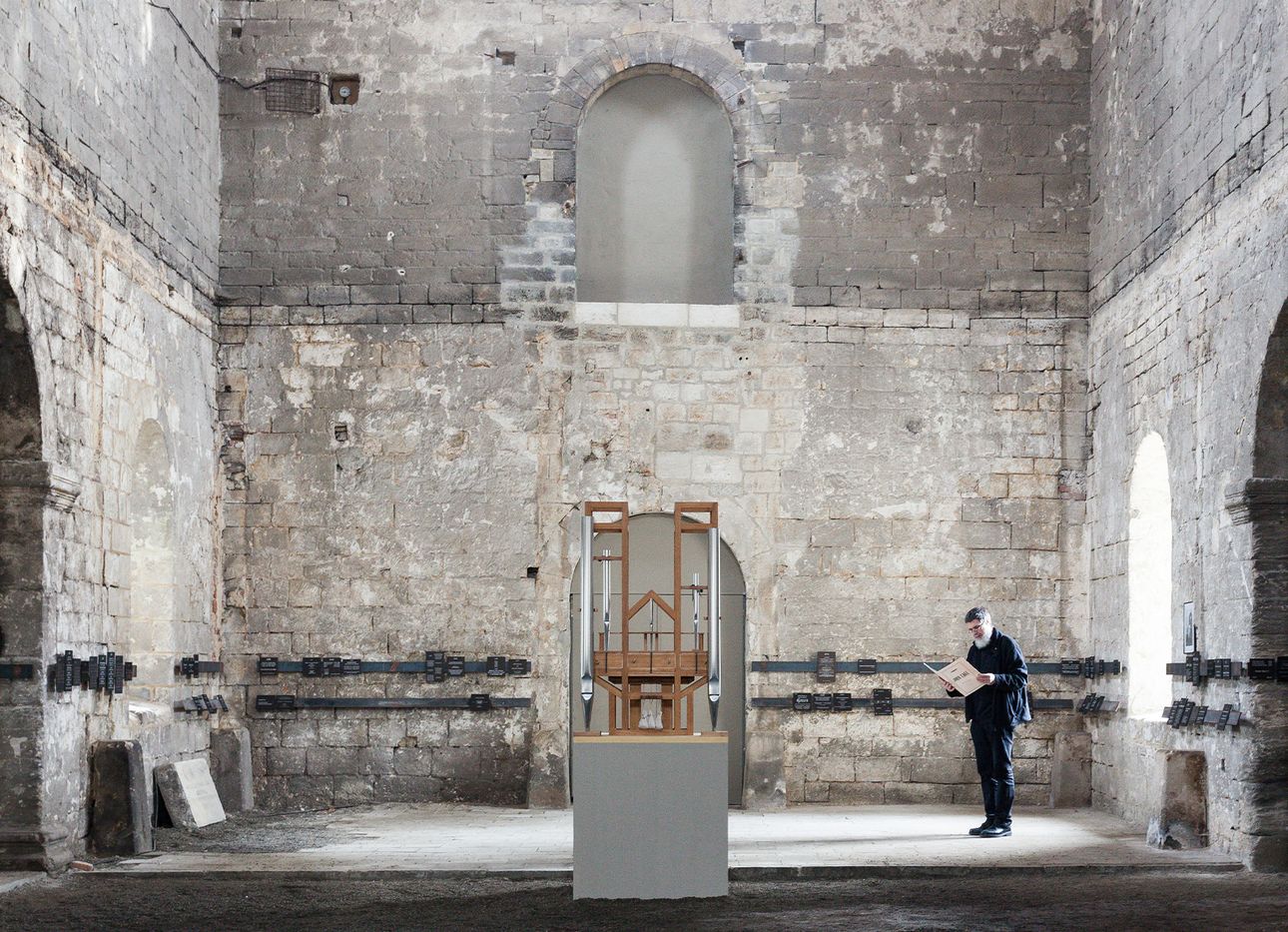
In Rural Germany, a Six-Century-Long Performance of a John Cage Organ Composition Is Underway
On first glance, the German town of Halberstadt may seem like any other. Winding rows of timbered houses line cobbled streets, broken up by the occasional remnant of gothic architecture. Within the quaint trappings of this berg, though, rests one of the most ambitious and odd musical experiments to see life: a six-century-long performance of legendary composer John Cage’s piece “ORGAN²/ASLSP.”
Conceived by the visionary back in 1985, the first version of the score, titled “ASLSP,” comprised four pages of sheet music for piano accompanied by the simple tempo instruction: “As slow as possible.” (The order also informs the works’ acronym-like name: As SLow aS Possible.) A pianist, while responsible for deciding the extent of this directive, could enjoy the fact that the notes their fingers strike inevitably fade, setting a natural limit on how long a chord could be held out before changing to the next. Two years later, at the suggestion of organist Gerd Zacher, Cage rewrote his piece for the organ—retitling it “ORGAN²/ASLSP”—allowing the instrument’s bottomless sustain to truly confront performers with the question: How slow is “as slow as possible”?
Interpreters have answered with recitals that clock in at various lengths, with a half-hour on the short end to 10 hours and 39 minutes on the long end. But none parallel the ambition of the concert at Halberstadt’s St. Burchardi church, where a specially-made organ sits encased in acrylic glass, performing, as you read this, a 639-year-long show.
This feat is made possible by the design of the St. Burchardi organ itself. The abiding limitations in most “ORGAN²/ASLSP” performances have been endurance-related challenges of the performers, such as their ability to stay focused, refrain from using the bathroom, and ward off sleep. So in 1998, a group of composers, organists, musicologists, and philosophers thought up an iteration of the piece whose ultimate inhibitor would instead be the lifespan of the organ itself. Their particular organ changes notes through the insertion and removal of pipes tuned to a given chord; three manual keys, held down by small sandbags, control the air supply for several pipes. One member of the group knew of an empty church, St. Burchardi, in Halberstadt—a fitting location for the project, given that it was where the first documented organ, with around 12 keys, was unveiled, in 1361. The centuries-long schedule for the production reflects the 639 years between the millennial year around which the performance started (2000) and the date of the instrument’s origin in this town (1361).
Changes in chords occur over the span of months, or sometimes years. The first sound, or wind from the bellows, was heard in September 2001, followed by the first chord change in February 2003. These dramatic intervals have made chord changes into major events, with the addition of a G4 sharp chord pipe and an E5 chord pipe in 2020—after roughly seven years of C, D flat, D sharp, A sharp, and E—drawing crowds of curious spectators from around the globe.
While the project has taken the immediate limits of human endurance out of the picture, it replaces them with larger questions of the feasible scale of human ambition. Can the concert be carried on from one generation to the next? Will there be interest? Will there be money? Will there even be people? The climate crisis, among other ills, casts an ever-darkening shadow on the question of human survival. Perhaps a tornado will rip the church out by its roots, or a flood will drown the organ’s windchest—any number of disasters could come about in the 618-odd years the performance has left to weather. But to engage with the project at all is to imagine the possibility of a future that sees its completion, with each changed note a promise for the one that comes next.